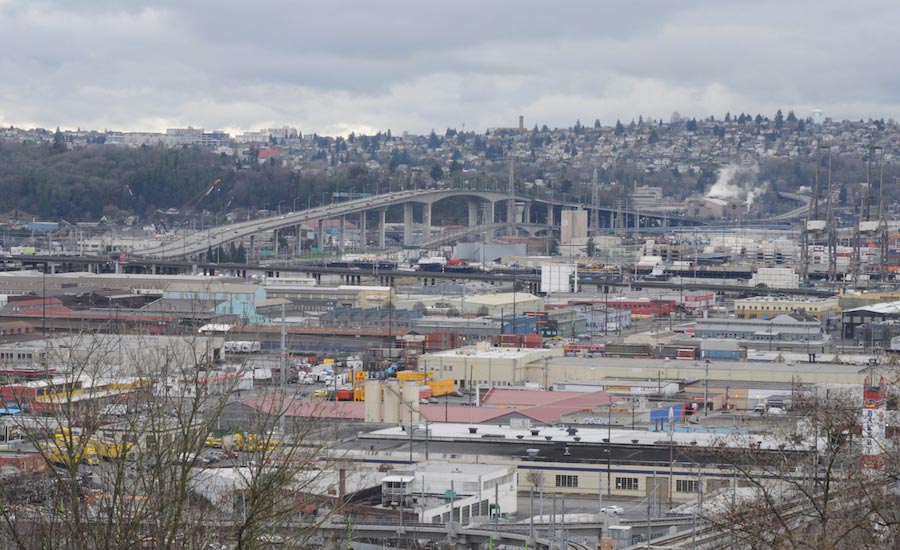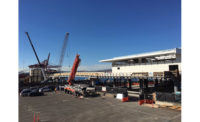Worsening concrete cracks in the West Seattle Bridge prompted Seattle Mayor Jenny Durkan to close the high-rise structure at 7 p.m. local time on March 23. The Seattle Dept. of Transportation has been regularly inspecting the cracks. During a review on March 22, an inspector found that known cracks in the concrete had worsened at a rate that both the agency and an outside specialist “found unacceptable,” the city says.
“A series of closely monitored cracks has grown faster than our team of experts had anticipated,” Sam Zimbabwe, agency director, said in a statement. “Our engineers saw this acceleration as a clear warning sign that closer inspection is necessary, and complete closure is required to maintain safety as our top priority. As we close the bridge today, we will scale and accelerate a process already underway to determine next steps.”
An outside review of the deterioration rate by bridge integrity specialists also confirmed the need to immediately remove traffic, both for public safety and to allow the 2,600-ft-long, 36-year-old structure to be inspected by a team of experts to determine the method of repair.
With the closure, buses, freight and emergency vehicles will be rerouted off the high-rise bridge to surface streets that connect with the Spokane Street Bridge, also called the low bridge, which runs the same route as the West Seattle Bridge. Personal vehicles will not be able to use the low bridge. They will be rerouted to the First Ave and South Park bridges.
“Last night, our engineers identified safety risks in our West Seattle high-rise bridge and are now taking swift action to protect the public by removing traffic from the bridge while next steps are assessed,” Durkan said
“When I learned about this issue today, I immediately supported the Mayor’s decision to temporarily close the West Seattle Bridge because safety should be our top priority,” said Alex Pedersen, city councilmember and chair of the council’s Transportation Committee. “As we provide safe travel alternatives for residents and public transit, I look forward to hearing not only an analysis from structural engineers, but also next steps, including a realistic timeline for solutions from our Seattle Dept. of Transportation.”
The city says a “comprehensive assessment” has already begun with a team of experts to determine the extent of the cracking and to put together a plan for a near-term repair.
The bridge has been monitored regularly since 2014. In 2019, the federal load rating for this type of bridge was changed, and SDOT initiated a new review. As a result, the transportation agency has regularly inspected concrete cracks.
By closing the bridge, the decreased load from the elimination of traffic may assist engineers in determining what possible repairs look like and how long they will take. The city is telling citizens to expect the bridge to remain closed for “at least several weeks, if not months.”
The bridge was originally designed for three lanes of travel in each direction, but was expanded to three westbound lanes and four eastbound. The added traffic, combined with the increased size and weight of commercial vehicles, has compounded the long-term maintenance challenge, the city says. Additionally, 80% of the load is dead load, so deterioration was possible even without traffic.
“With commuters taking seriously our public health directives to stay at home, we will use this moment to plan for the rebound,” Dow Constantine, King County executive, said. “As a lifelong West Seattleite, I know how difficult I can be for the 80,000 or so of us on the peninsula when connections with the rest of the region are interrupted. We will do everything in our power to make sure West Seattle has strong transit alternatives during bridge repair.”








